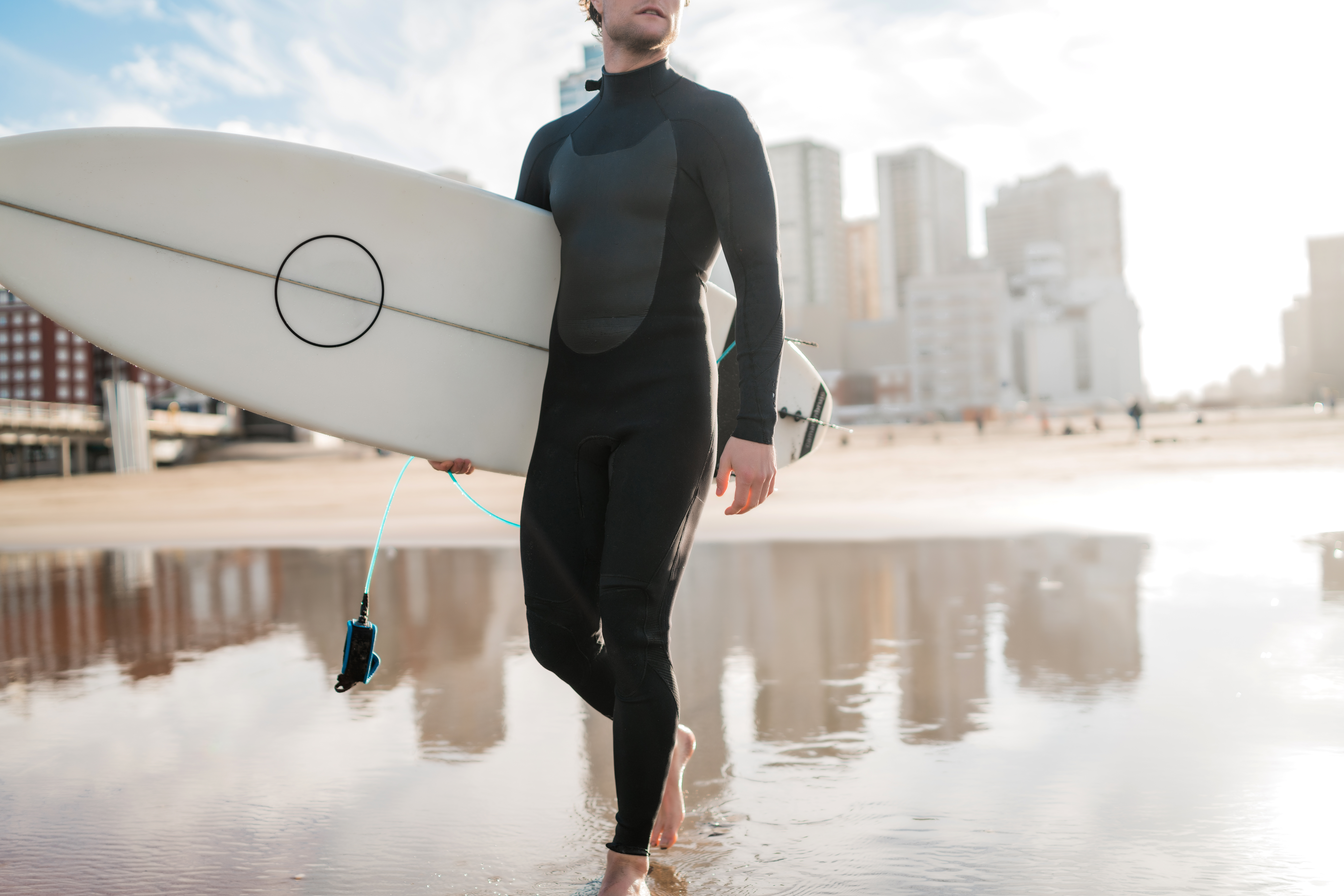When it comes time to put on a wetsuit, drysuit, or rash guard, you might think they’re interchangeable. You might think choosing one over the other is simply a personal preference.
In fact, there are differences among them worth noting.
Several factors will impact which you choose to wear and when. It could be the body of water you’re in or the activity you’re participating in or which you find more comfortable.
To make the right decision, it’s important to understand what wetsuits, drysuits, and rash guards are.
So, without further ado, let’s dive in!
The Difference Between Wetsuits, Drysuits, and Rash Guards

While wetsuits, drysuits, and rash guards are all designed to be used in the water, they all function differently. If you’re a water enthusiast and find yourself venturing out regardless of the time of year, it’s a good idea to own all three.
In short, they’re all designed to protect and insulate your body in the water. But to truly understand them, you should know their distinct definitions.
What is a Wetsuit?

Wetsuits keep you warm in cold water by trapping a thin layer of water between the suit and your skin. Your body warms up that trapped water to create a protective layer between you and the cold water you’re in.
There are varying thicknesses of wetsuits available. The colder the water, the thicker the wetsuit should be. Every wetsuit is listed with a number: 2mm, 5mm, etc. The bigger the number, the thicker the suit.
In addition to varying degrees of thickness, there are multiple styles of wetsuits. Here are the most common:
- The Shorty. Providing more freedom of movement, a shorty wetsuit is a great option for warmer water. The sleeves extend to the elbow and the legs extend to just above the knees. The shorty is an ideal choice when you want to keep your torso warm but maintain maximum flexibility of your limbs.
- The Full Suit. Probably the most common type of wetsuit, the full suit can be used in various water temperatures, making it the most versatile. They have long sleeves that extend to the wrist and legs that extend to the ankle. The full suit is an ideal choice in waters 66-degrees and below.
Find the right wetsuit for the whole family, shop men’s wetsuits, women’s wetsuits, and junior wetsuits.
What is a Drysuit?

A drysuit is different from a wetsuit in that it keeps you completely dry, ensuring water does not get inside the suit. It’s a fully sealed suit that uses a combination of neck and cuff seals as well as a waterproof zipper to keep water from entering.
They fit looser than a wetsuit and give you the option to wear layers underneath for insulation and comfort. Instead of water to keep you warm, a drysuit traps a layer of air between the body and suit.
Due to their loose fit, drysuits create more drag as you move through the water, causing you to be slower than usual. Because of the design, however, you’re able to ensure your warmth in cold water through additional layers.
Shop drysuits.
What is a Rash Guard?

A rash guard is essentially a shirt that provides protection from the sun while still being breathable. Originally designed for surfers who were experiencing irritation from sand and residue on their surfboards — a rash, if you will — rash guards quickly became a versatile item of clothing for all water enthusiasts.
Often referred to as a swim shirt or sun shirt, a rash guard doesn’t offer the same level of insulation as a wetsuit or drysuit does. Their main goal is to protect your skin from the sun and other potential irritants.
While they aren’t a solid choice for diving or surfing in colder water temperatures, they are perfect for warm days at the lake or beach or when you’re out on the boat. A rash guard should fit like a shirt, not too tight or too loose, and can be worn both in the water and out.
Shop rash guards.
When to Wear Wetsuits vs. Drysuits vs. Rash Guards

Now that they’ve been defined, you might be wondering the best time to wear a wetsuit or a drysuit or a rash guard. Below are a few activities and the best option for each.
Swimming
Depending upon the temperature of the water you’re swimming in, a wetsuit or rash guard can be worn. For colder temperatures, a wetsuit is recommended. For swimming at the pool or the beach in warmer weather, a rash guard will suffice. You can swim in a drysuit but you’ll be much less efficient.
Surfing

Again, depending on the temperature of the water and the location you’re in (warm climate versus cold) then a wetsuit or rash guard are the best choices.
Diving
A wetsuit or drysuit is the best option when diving. A rash guard isn’t typically used when diving, especially in colder water, as it provides little to no protection against cold temperatures.
Kayaking, Stand-Up Paddleboarding, & Wakesurfing

For most watersports, including kayaking, stand-up paddleboarding, and wakesurfing, a wetsuit or a drysuit are going to be the best choice of protection during the colder months.
Boating & Fishing
If you’re spending most of your time on land, in the boat, or in shallow water, a rash guard is your best option. It will protect you from the sun and keep you stylish at the same time.
Which Suit Suits You?

The most important thing to remember on the water is to have fun. Choosing a wetsuit, drysuit, or rash guard boils down to understanding the suit that suits your adventure.
Have you worn a wetsuit, drysuit, or rash guard? Tell us your favorite part of each in the comments below!










